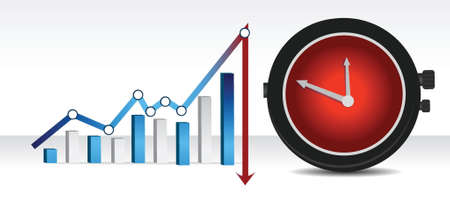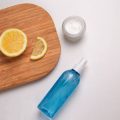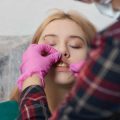Introduction to PRP Therapy
Platelet-Rich Plasma (PRP) therapy has gained popularity across the United States as an innovative, non-surgical treatment for hair loss. This procedure utilizes your body’s own platelets—tiny blood cells involved in healing—to stimulate hair follicles and encourage new growth. During a typical PRP session, a small amount of your blood is drawn, processed in a centrifuge to concentrate the platelets, and then injected directly into areas of thinning hair on your scalp. The goal is to harness the natural growth factors found in platelets to boost the health and thickness of existing hair while promoting the development of new strands. As more Americans seek out minimally invasive options for restoring their hair, PRP therapy has become a go-to solution for both men and women dealing with pattern baldness or thinning hair. But how long does it actually take to see results? In this article, we’ll break down what you can expect from PRP therapy—and when.
2. What to Expect After Your First PRP Session
After your first PRP (Platelet-Rich Plasma) therapy session for hair loss, its natural to be curious about what comes next and how quickly you might notice results. Understanding the immediate aftermath can help set realistic expectations and ease any concerns about the process. Right after the treatment, most patients experience mild sensations such as slight tenderness, swelling, or redness at the injection sites. These effects are generally short-lived and resolve within a day or two.
Its important to note that PRP therapy is a minimally invasive procedure. You can usually return to your normal activities right away, though some practitioners may suggest avoiding strenuous exercise or direct sun exposure for 24 hours. Some people report feeling a tingling or warmth in their scalp as the growth factors get to work. Below is a quick overview of common post-session experiences:
| Timeframe | Typical Sensations | Recommended Actions |
|---|---|---|
| First Few Hours | Mild tenderness, slight swelling, redness | Avoid touching or washing the scalp; rest if needed |
| First 24 Hours | Sensitivity may persist, minimal discomfort | No vigorous exercise; keep scalp clean and dry |
| Next 2-3 Days | Sensations subside, return to normal feeling | Resume routine hair care unless otherwise advised |
While these initial reactions are common, it’s also important to remember that visible hair growth won’t happen overnight. The first PRP session kickstarts the body’s natural healing processes by delivering concentrated platelets and growth factors directly into the scalp. Over the following weeks, these components stimulate dormant hair follicles and promote healthier hair growth cycles. Many patients find reassurance in knowing that mild side effects are temporary and part of the process leading to eventual results.

3. Typical PRP Treatment Timeline
When considering PRP therapy for hair growth, it’s important to understand what a typical treatment timeline looks like. Most providers in the United States recommend a series of sessions rather than a single treatment to achieve optimal results. Here’s a breakdown of what you can generally expect:
Standard Session Schedule
The standard PRP treatment plan usually involves three to four initial sessions spaced about four to six weeks apart. This interval gives your scalp time to respond and heal between treatments, while also allowing the growth factors from the PRP injections to stimulate hair follicles progressively.
Recommended Number of Sessions
Most patients will undergo an initial set of three sessions as a baseline. However, depending on your individual needs and how your body responds, some providers may suggest a fourth session or adjust the schedule slightly.
Maintenance Treatments
After completing the initial round of treatments, maintenance is key. It’s common for clinics in the U.S. to recommend follow-up sessions every four to six months to maintain and enhance your results over time. Sticking with this schedule helps keep the momentum going for healthy hair growth.
This structured approach ensures that you give your scalp ample opportunity to benefit from the regenerative effects of PRP, while also tailoring the plan based on your progress and specific goals.
4. When Will You Start Seeing Results?
One of the most common questions about PRP therapy for hair loss is: “When will I actually see results?” The answer can vary from person to person, but understanding the general timeline and what clinical studies and real patient experiences show can help set realistic expectations. Typically, PRP (Platelet-Rich Plasma) therapy works gradually because it relies on your body’s natural healing process to stimulate hair follicles.
What Clinical Data Shows
Clinical research consistently finds that most patients begin to notice improvements in hair thickness and density within a few months after starting PRP treatments. According to a study published in the International Journal of Trichology, participants saw noticeable changes in hair growth between three and six months after their first session. However, some patients may observe subtle differences even earlier, while others might need more time for visible results.
Patient Experience Timeline
| Time After First PRP Session | Typical Patient Observations |
|---|---|
| 1 Month | Minimal change; some patients report less hair shedding |
| 3 Months | Early signs of new growth; improved hair texture |
| 6 Months | Noticeable increase in hair density and thickness |
| 9-12 Months | Fullest effect for most patients; continued improvement with maintenance sessions |
What Influences Your Results?
The speed at which you see results can depend on several factors, including your age, genetics, overall health, the severity of your hair loss, and how consistently you follow your recommended treatment schedule. Patients who stick closely to their provider’s protocol—often involving an initial series of monthly treatments followed by periodic maintenance—tend to see the best outcomes.
In summary, while some people notice early signs like reduced shedding or softer hair within the first month, most patients experience significant improvements around the three to six-month mark. Patience is key—consistent treatment and realistic expectations are critical for achieving optimal results from PRP therapy.
5. Factors That Influence Results
While PRP therapy has shown promise for many individuals seeking hair restoration, the effectiveness and timeline for visible results can vary significantly from person to person. Understanding the variables that influence outcomes can help set realistic expectations and optimize your treatment plan.
Age and Biological Factors
Your age plays a crucial role in how well you respond to PRP therapy. Generally, younger patients with early-stage hair thinning tend to see faster and more noticeable improvements. This is because their hair follicles are often more responsive and have not yet experienced extensive damage or dormancy.
Overall Health and Medical Conditions
Your general health status impacts the quality of your blood and platelet function, which are essential components of PRP therapy. Chronic illnesses, hormonal imbalances, autoimmune diseases, or nutrient deficiencies can impede the healing process and slow down hair regrowth. If you have underlying health issues, addressing them in conjunction with PRP treatments may improve your chances of success.
Pattern and Severity of Hair Loss
The pattern and extent of your hair loss are also key factors. Individuals with diffuse thinning or mild-to-moderate androgenetic alopecia typically achieve better results compared to those with advanced balding or patchy alopecia areata. The earlier you start PRP therapy after noticing hair loss, the greater the likelihood of positive outcomes.
Lifestyle Habits
Your daily habits can either support or undermine your progress with PRP therapy. Smoking, excessive alcohol consumption, poor diet, high stress levels, and lack of sleep can negatively affect blood circulation and cellular repair—both vital for healthy hair growth. Conversely, maintaining a balanced diet rich in vitamins and minerals, staying hydrated, managing stress, and exercising regularly can enhance the effectiveness of PRP treatments.
In summary, individual factors such as age, overall health, the specific pattern of hair loss, and lifestyle choices all contribute to how quickly—and how well—you’ll see results from PRP therapy. Taking steps to optimize these variables may help you achieve your desired hair restoration goals more efficiently.
6. Tips for Maximizing Your Results
Getting the best results from PRP therapy for hair growth isn’t just about showing up for your appointments—it’s also about what you do before and after each session. Here are some practical tips to help you maximize your outcomes and see results sooner.
Prioritize Proper Aftercare
After each PRP session, follow your provider’s aftercare instructions closely. Avoid washing your hair or using harsh products for at least 24 hours to prevent irritation. It’s a good idea to skip intense workouts and sauna visits right after treatment, as excessive sweating can interfere with the healing process. Always keep your scalp clean and avoid scratching or picking at the treated area.
Focus on Nutrition
Your diet plays a key role in supporting new hair growth. Aim for a balanced diet rich in lean proteins, leafy greens, healthy fats, and plenty of vitamins and minerals—especially iron, zinc, vitamin D, and biotin. These nutrients help strengthen hair follicles and encourage healthy regrowth. If you’re unsure about what to eat, consider talking to a registered dietitian familiar with hair health.
Adopt Healthy Hair Care Habits
Gentle care goes a long way when you’re trying to stimulate hair growth. Choose mild shampoos without sulfates or parabens, and avoid over-washing which can dry out your scalp. Limit the use of heat styling tools like blow dryers, straighteners, and curling irons. When brushing, opt for a wide-tooth comb to minimize breakage and be gentle with tangles.
Avoid Harmful Chemicals
Chemical treatments like dyes, perms, or relaxers can stress out your scalp and potentially slow down the progress of PRP therapy. Try to postpone these services until your healthcare provider gives you the green light.
Manage Stress Effectively
Chronic stress is linked to hair loss and can hinder your PRP results. Find stress-reducing activities that work for you—whether it’s regular exercise, yoga, meditation, or simply taking time for yourself every day.
Stay Consistent with Follow-Up Appointments
Consistency is key. Make sure you attend all scheduled PRP sessions and follow any maintenance recommendations from your provider. This helps ensure ongoing stimulation of hair follicles and promotes optimal long-term results.
By combining these practical steps with professional PRP therapy, you’ll give yourself the best chance at seeing noticeable improvements in hair thickness and growth over time.
7. When to Talk to Your Specialist
Monitoring your progress is an important part of the PRP therapy journey for hair growth. While it’s normal for results to take several months, everyone’s response is unique, and there are times when consulting your specialist is essential. If you notice little to no improvement after six months or if your hair loss seems to be worsening, it’s a good idea to schedule a follow-up appointment. Your doctor can assess whether adjustments are needed in your treatment plan, recommend additional therapies, or investigate other underlying causes for delayed results. Additionally, if you experience any unusual side effects—such as persistent pain, redness, or swelling at the injection site—reach out to your provider promptly. Regular check-ins help track your progress accurately and ensure that you’re on the right path toward achieving your hair restoration goals. Open communication with your specialist not only helps set realistic expectations but also maximizes the effectiveness of your PRP therapy.


